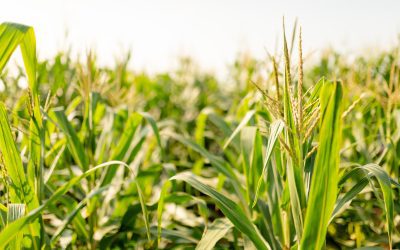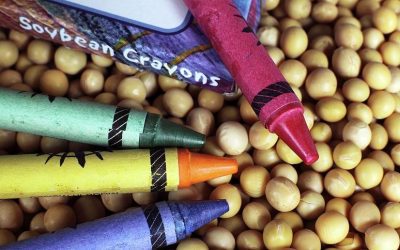Central Indiana accumulated 1.2 inches of rain in the month of June, which was 73 percent below the 30-year average for June. In addition, several days were observed with max air temperatures above 95 degrees Fahrenheit. Therefore, as high temperatures continue to persist and soils begin to dry out, this begs the question of what will happen to the corn crop? And, should I be concerned?
The good news is that corn originated from a tropical grass and has been observed to withstand temperatures upwards of 112-degrees F for short periods, with plant growth typically decreasing when temperatures exceed 95-degrees F. Therefore, temperatures in the mid-90s during the afternoon typically do not impact corn photosynthetic capacity and yield if soil moisture is adequate.

Overall, young corn in the vegetative growth stages is fairly tolerant to high temperatures and drought conditions. In addition, dry soil conditions early in the season can encourage deeper rooting of corn, which will likely assist the corn plant with moisture access later in the season if the dry conditions persist. Deeper root systems allow the plant to access greater volumes of soil for increased moisture access.
The combination of hot, sunny days and increased drought stress in corn can limit the total water uptake of growing plants, thus resulting in reduced photosynthesis. Symptoms of drought stress include leaf rolling which is due to plants closing leaf stomates to limit the transpiration of moisture through the plants. Although the attempt to limit transpiration of moisture can help a stressed corn plant, closed stomates can reduce plant photosynthesis due to reduced carbon dioxide accumulation.
The earlier leaf rolling occurs in the day; and the longer the duration of leaf rolling is observed, the more stress the plant is under, and the more potential yield loss can occur. Yield loss estimates have been previously quantified when drought stress and leaf rolling occur for four consecutive days or more.
Affects of drought stress
Significant drought stress during vegetative growth can impact plant development and size and ear size potential. (Potential kernel number per row is more sensitive to environmental stress than kernel row number per ear.) In addition, since dry soil conditions limit water uptake of a corn plant, these conditions can also limit nutrient uptake. For example, potassium deficiency is often observed under drought stress conditions.
As corn approaches maximum height and pollination, this is when the risk of yield loss due to heat and drought stress is the greatest. Corn water use increases from emergence to approximately the V15 growth stage where water use peaks through silking and pollination and until the R2 growth stage (blister) before decreasing.
Corn needs approximately 0.33 inches per day of water during peak demand and temperature, humidity level, and cloud cover can impact the total amount of daily water lost. Significant heat and water stress that occurs 7-10 days ahead of silking and throughout pollination can result in delayed silk emergence, reduced silk elongation, and silk desiccation. Once the tassel has emerged and pollen shed has begun, a corn plant will only shed pollen for approximately seven days. Delayed silk emergence can cause poor synchrony of pollen shed with silk emergence and elongation, thus reducing kernel number and yield.
In addition, extreme heat stress (higher than 100-degrees F) can kill pollen. However, pollen shed does not occur on one single day and peak pollen shed typically occurs in the morning when temperatures are lower.
Overall, corn is fairly tolerant to heat and drought conditions during early vegetative growth. However, if the heat and drought continue to persist and severe plant stress is observed, plant photosynthetic capacity and yield can be lost.
Where heat and drought stress can become a significant problem is during pollination and silking. Therefore, it will be important to continue to monitor the weather and the corn crop throughout Indiana the next few weeks and maybe try out a few “rain dances” as we begin to approach some of the most critical growth stages in the life cycle of the corn plant.



